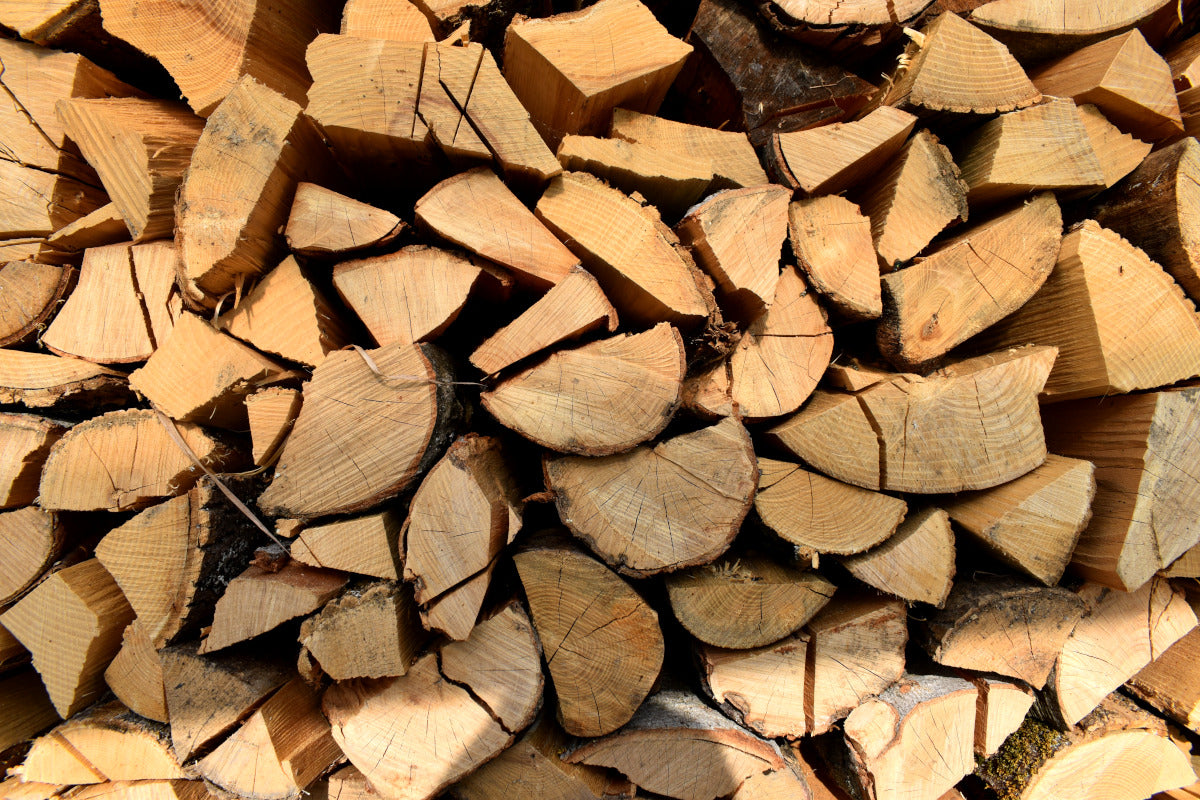The Most Critical Part of Seasoning Firewood
As September settles in, nights are already getting cold enough that the morning air has a little bit of a bite here in central New York. Though the wood stove at the heart of my house sits unused, I know in another month it will be time to start lighting fires, so it is perfectly natural to think about the wood I will burn.
But I don’t mean the wood I will burn this year – that is already split and stacked. I mean the wood I will be burning next fall and winter. Freshly cut green wood has so much water in it that if you burn it most of the energy will go to evaporating water rather than generating heat. Further, green wood doesn’t burn clean, leading to pollution and more creosote build up in your chimney.
This means that firewood must be allowed to age. Wood cut in the spring will burn well enough the following fall, but letting a full year pass is better. The most important step in seasoning firewood is time. Even split wood takes a while to dry out enough to be properly seasoned, so don’t rush it! Seasoned firewood burns hotter and cleaner, which means you get much more heat for your work.
But Time Alone is not Enough
While time is necessary to seasoning firewood, time alone is not enough. Firewood left in an uncovered pile will usually start to rot. Even if it doesn’t, it will not get significantly drier. Covering it with a tarp doesn’t help much. While this will keep off rain, it also traps air – and thus moisture – inside, creating a very humid atmosphere, which will prevent the firewood from drying.
Far better is to stack the firewood beneath a cover that sheds rain while also allowing air flow. If you have a big porch you aren’t using for another purpose that might be a good option, but most of us will want a stand alone structure. You can purchase various racks, some of which come with covers. If you only burn wood very occasionally, this may be all you need.
But if you burn a significant amount of firewood, it makes more sense to use a dedicated structure. One option is to look for a car port or similar modular structure on craigslist. Even better is to do what I do and buy a hoop bender and build your own dedicated firewood hoop. (This is a big enough topic to deserve its own post, which I’ll get to soon!)
To summarize: you want your firewood stored in a way that minimizes rain while maximizing airflow.

How To Season Firewood
Equipment
- Splitting Tools
Materials
- Green Wood
Instructions
- Split Firewood: Split wood burns better and dries faster.
- Stack Firewood: Don't just make a pile of wood unless you're prepared to wait years for it to fully dry, and don't build stacks of wood with their ends touching. Leave gaps for air to circulate.
- Keep Off the Rain: Best is a porch or dedicated structure, but flat metal roofing over the top of the stack, with the sides open to allow air circulation, also works. If you use this approach weight down the roofing so it doesn't blow away.
- Wait: Let the wood dry six months minimum, preferably a year.
More Tools and Tricks
When it comes to splitting wood, I prefer the Fiskars X27 axe. It is light weight enough to swing repeatedly, which is important, since I split my firewood fairly small. If you’re interested, here’s a longer review I wrote of the Fiskars axe. I also use a box, in which I stack a bunch of wood at once. This lets me split it all to my desired size without repeatedly standing it back up, and it elevates the rounds to the proper height for splitting.
When designing storage, it is a good idea to make it accessible from both ends. This lets you fill one half up with green wood while simultaneously removing properly seasoned firewood from the other end, and it also encourages the airflow necessary for efficient seasoning.


